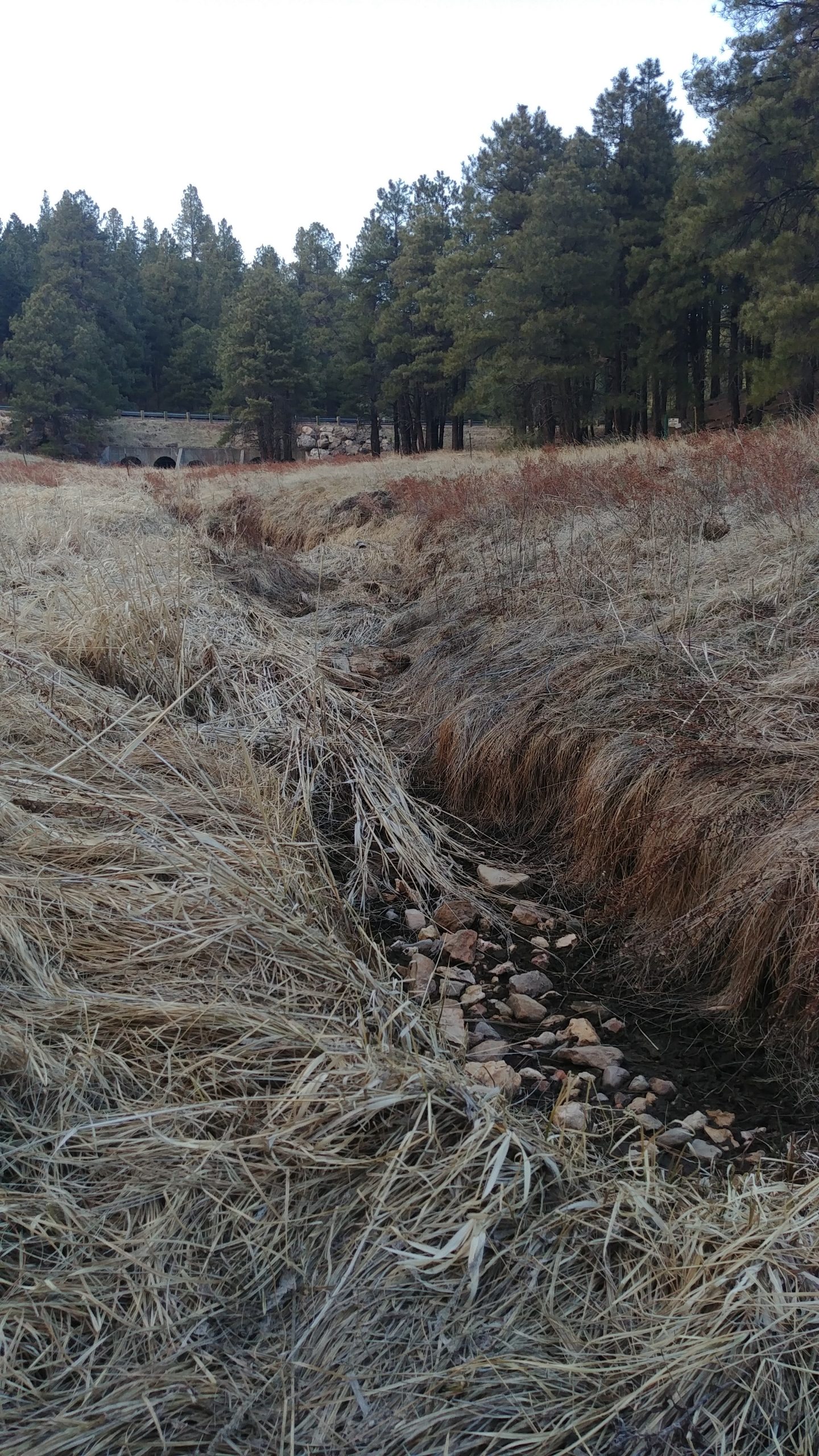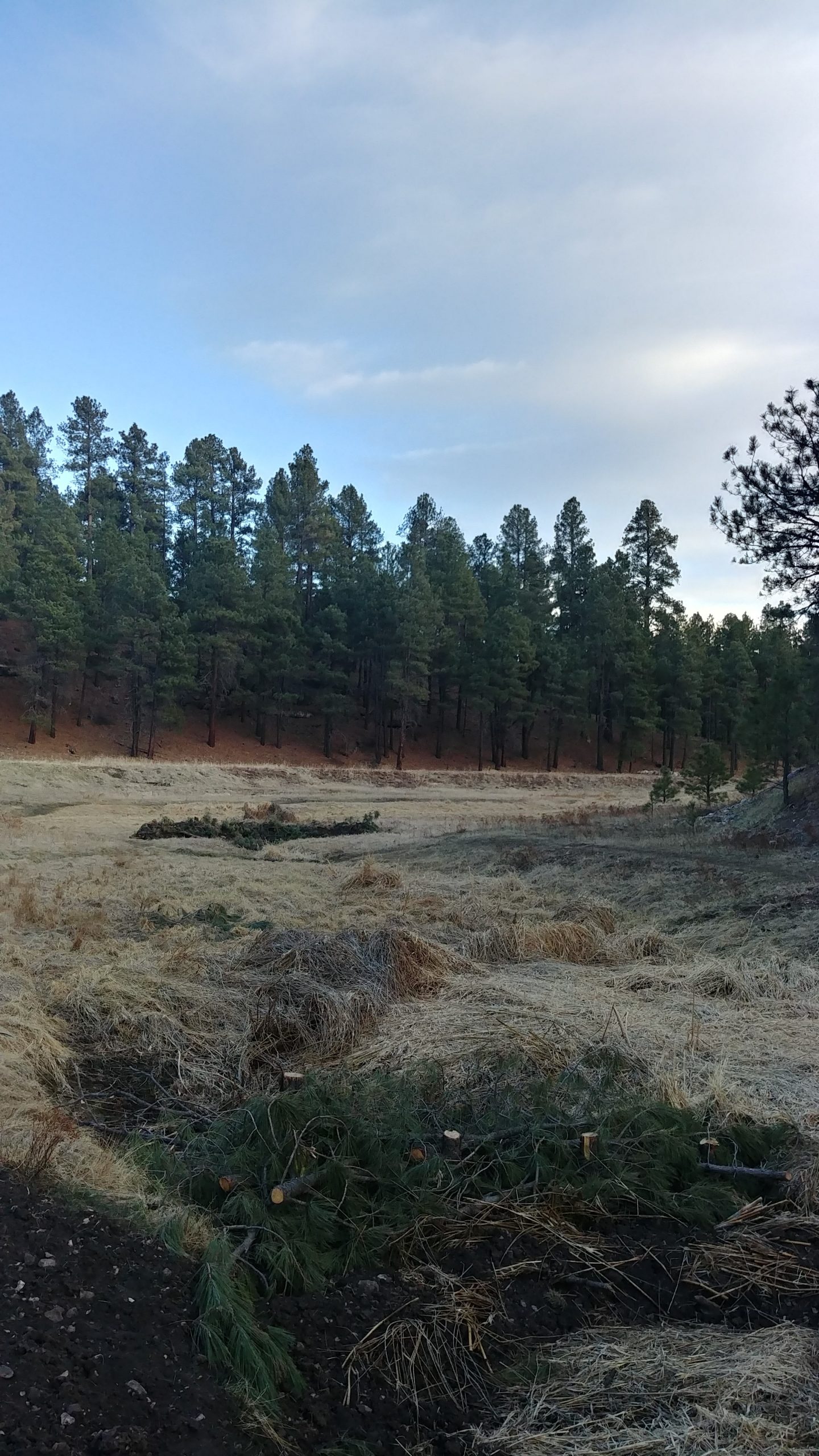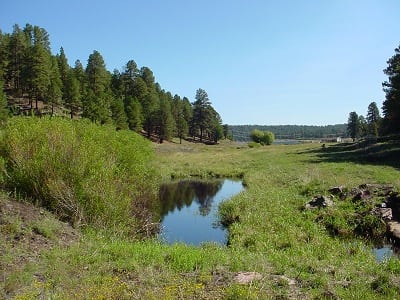If you’re looking to Celebrate AZ Water in cooler temperatures, there is a fascinating area located in Kachina Village approximately nine miles south of Flagstaff in Northern Arizona.
What is the Pumphouse County Natural Area?
Pumphouse County Natural Area encompasses 125 acres and includes a spring-fed wetland and one of the rarest wildlife habitats in Arizona. This area forms the headwaters of Oak Creek, a major tributary of the Verde River, itself one of the desert’s last free-flowing rivers. This actively managed wetland consists of Pumphouse Meadow, Pumphouse Wash, and Harrenburg Wash. Conservation studies consistently recognize the Natural Area as a crucial resource in need of long-term protection. Based on the Natural Area’s Management Plan, Coconino County Parks and Recreation implements stewardship activities to ensure the conservation of both natural and cultural resources.

Harrenburg Wash
As mentioned, Harrenburg Wash is a part of Pumphouse County Natural Area and is managed by Coconino County Parks and Recreation. The presence of water in Pumphouse Wash is due to natural springs; however, water in Harrenburg Wash is intermittent and relies on snowmelt and precipitation. When the area experiences dry winter conditions as was the case of Winter 2017-18, lower amounts of water run through Harrenburg Wash.
Trail users can access non-motorized, multi-use trails along the wash heading north from the trailhead located off Ancient Trail Road north of Jadito Trail road. Kachina Village Improvement District (KVID) donated the Harrenburg parcel many years ago, and Parks and Recreation has been increasing conservation efforts along the wash to address water erosion issues.
Head Cuts and Beaver Dam Analogues – Wait, what are those?
A breached earthen dam on the Harrenburg Wash site, where a recreation “pond” was originally constructed by an unsuccessful Kachina Village subdivision, caused the start of a head cut from the upper end of the pond up the valley towards Forest Highlands, a community formed in 1987. A head cut is an erosional feature with an abrupt vertical drop, that will migrate upstream as erosion continues.

There is ample evidence in the wash area that head cutting has essentially dried up most of the upper wetland. The presence of dead willows is a prime example of this, as is the presence of upland vegetation in the previous wetland zone. On the advice of wetland and erosion experts, Coconino County Parks and Recreation began looking at measures to slow water down and spread it out to help bring the head cut under control.
Who are the experts at slowing down water and spreading it out? Beavers! What looks like pine bough piles in Harrenburg Wash are beaver dam analogues (BDAs), or simply put, a man-made beaver dam. No, Parks and Recreation is not seeking to attract beavers to the area, but the department is looking to do what beavers do, slowing and spreading the water and ultimately slowing water erosion.
In Winter 2017-18, Coconino County Parks and Recreation staff created three BDAs along Harrenburg Wash. BDAs are cost-effective, temporary features that will erode over time, likely lasting one to three years. In that time, water will not only slow down and spread out, but silt will drop out of the water instead of eroding the channel. The BDAs are more porous than actual beaver dams, so they will hold little if any water. These types of features have been used for hundreds of years to slow down erosion, and Parks and Recreation is hopeful this will be the case in Harrenburg Wash.
Learn More
Hike the Pumphouse Nature Trail, an easy ¾-mile round-trip trail with wildlife viewing blinds, stone benches, and educational displays. Along Pumphouse Wash Nature Trail, visitors may encounter western and mountain bluebirds, blue grosbeak, broad-tailed hummingbird, belted kingfisher, flycatchers, phoebes, five different species of swallows, and the occasional Lewis’s woodpecker. Visit our Coconino County website for more details.
For a closer look at the area, use the Pumphouse Vicinity Map
Are you looking for other unique and interesting destinations to explore in Arizona? Then be sure to check out our complete list of Celebrate AZ Water articles.
From time to time, Water – Use It Wisely features guest bloggers who write about topics related to water and water conservation. The author of this blog post, Liz Krug, is the community relations coordinator with Coconino County Parks and Recreation. Ms. Krug has worked in the parks and recreation field for 15 years. She is passionate about connecting people to nature and the land.


